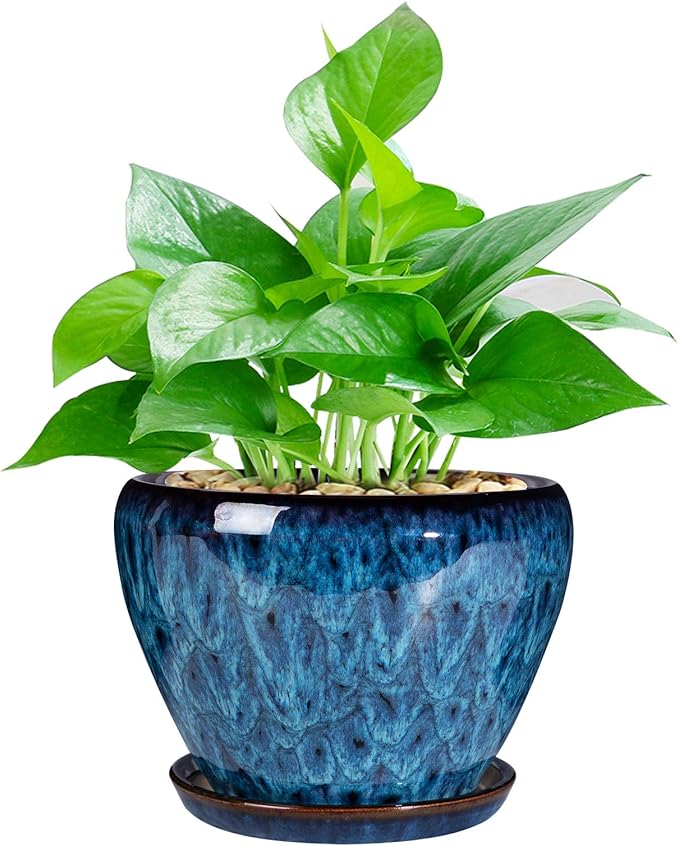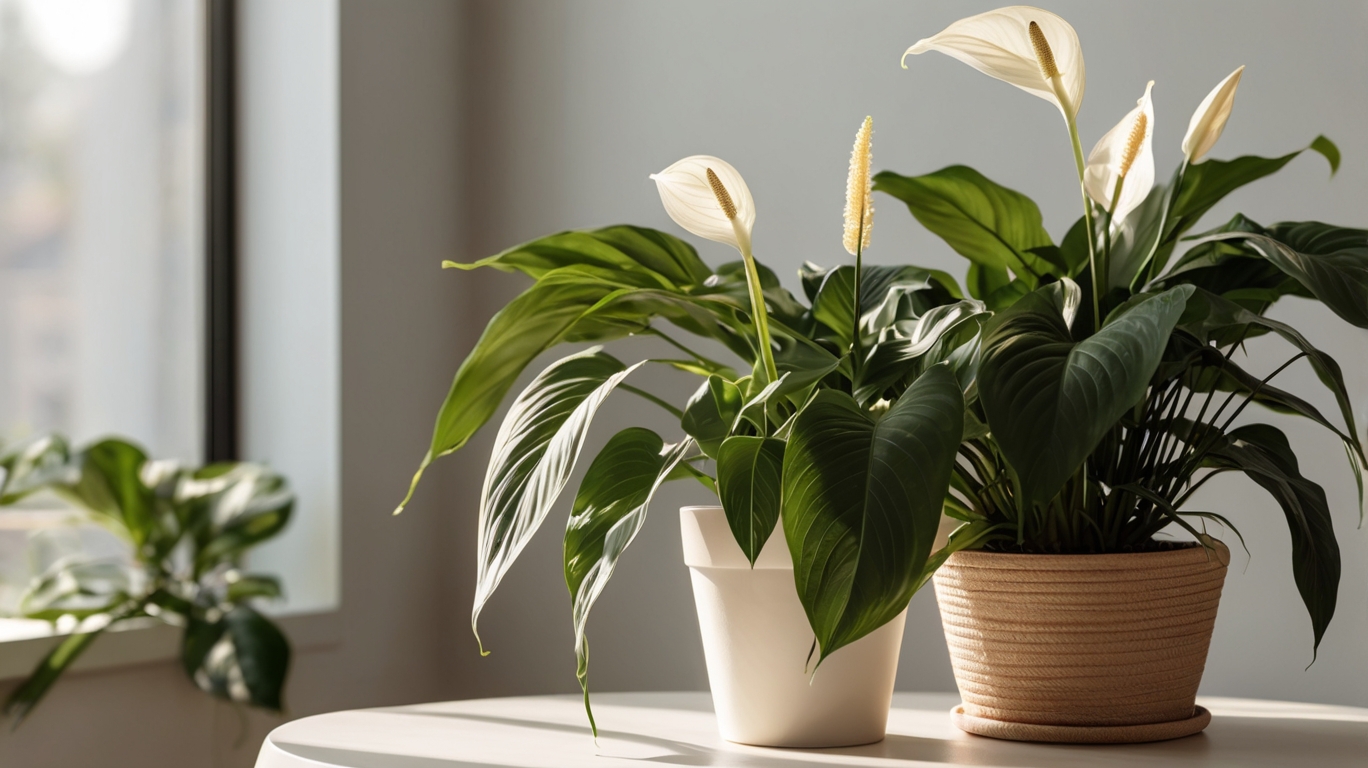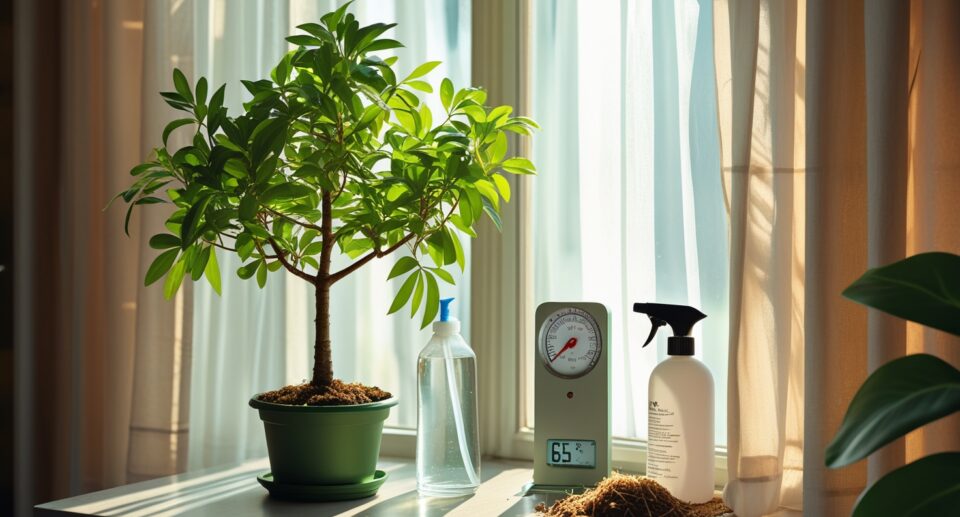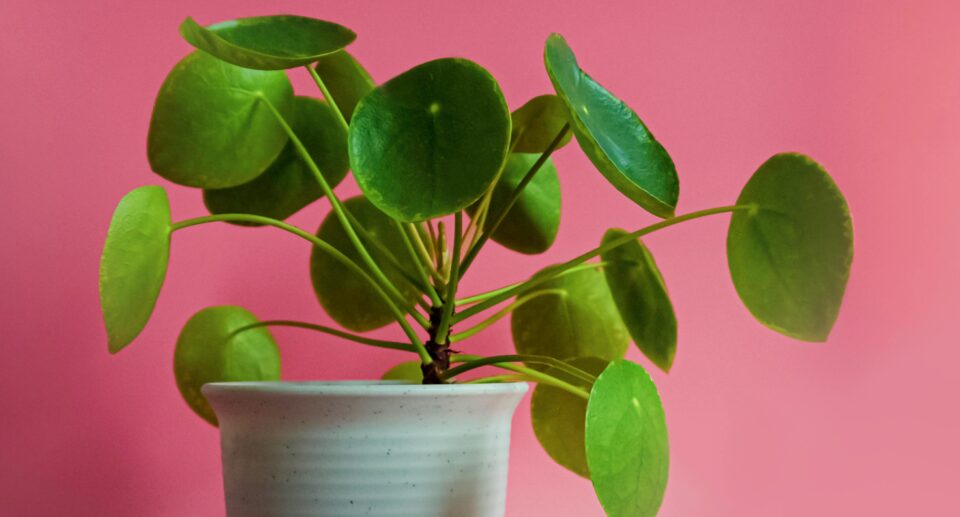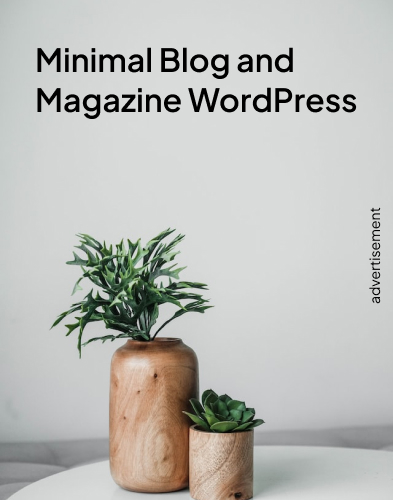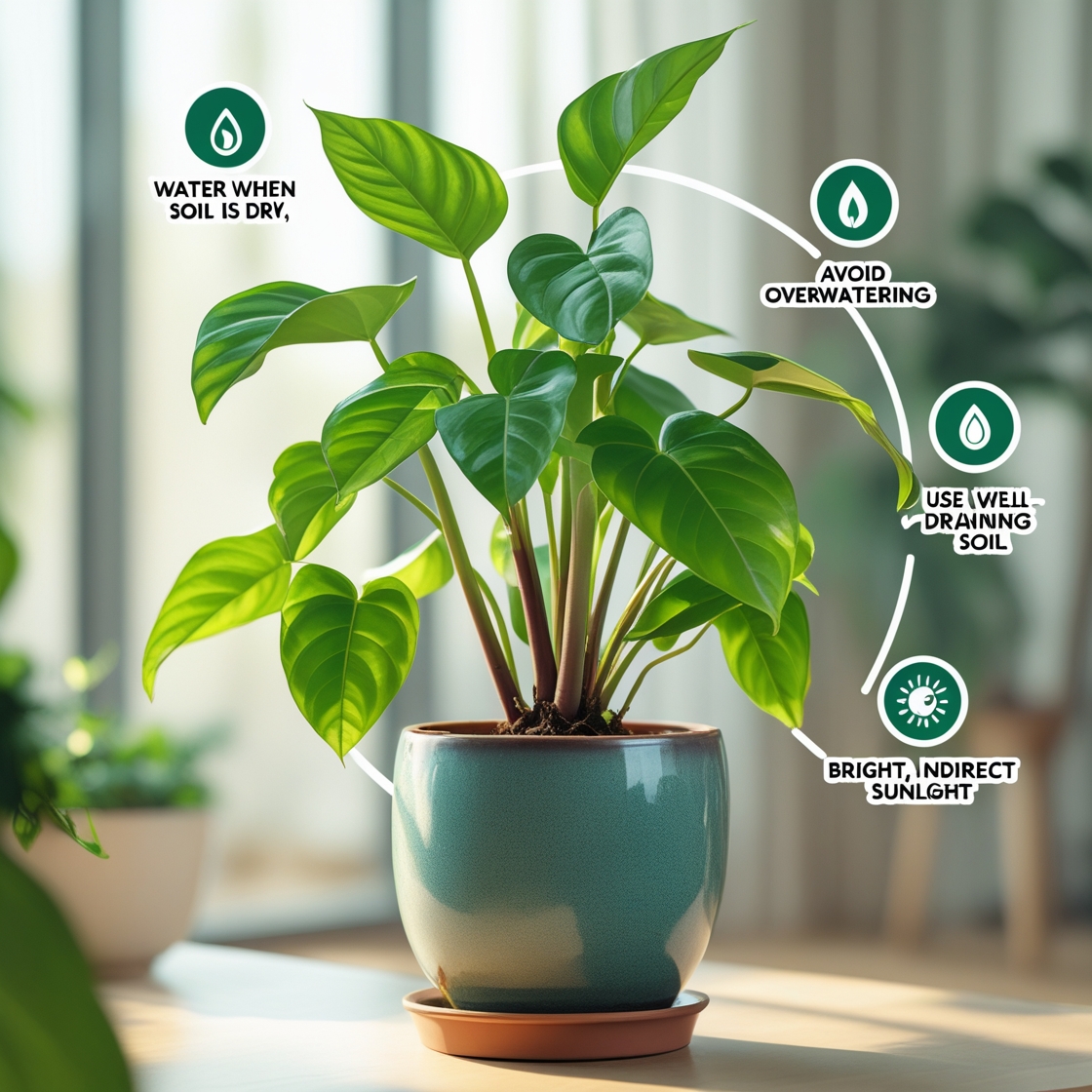Step-by-Step #1 Essential Guide to Expertly Trim Your Thriving Money Tree Plant
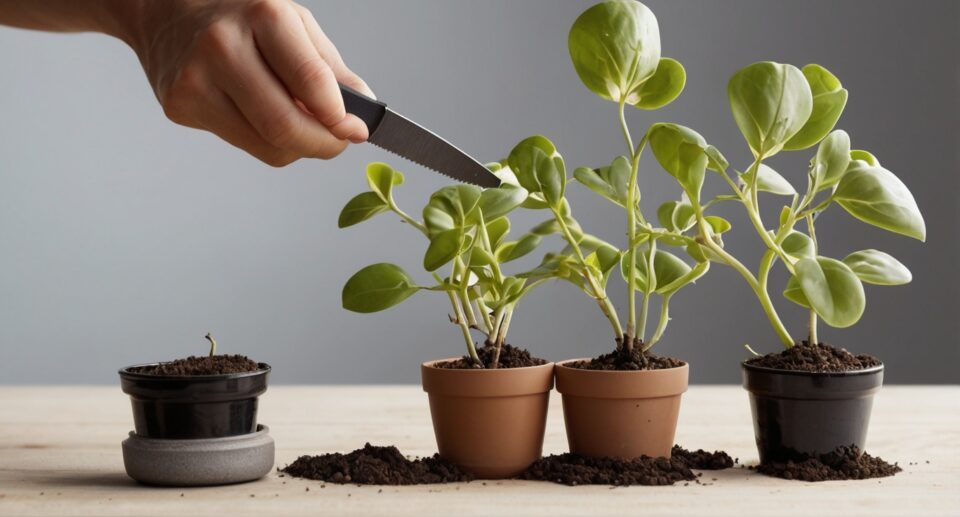
Introduction to Money Tree Plants and Their Growth Habits
The Money Tree plant, scientifically known as Pachira aquatica, is a popular choice among indoor houseplants due to its aesthetic appeal and low-maintenance requirements. Native to Central and South America, this tropical plant thrives in its natural habitat near wetlands and swamps. Its distinguishing features include its braided trunk and glossy, palmate leaves. In many cultures, it is believed to bring good fortune and prosperity, further solidifying its status as a favorite decorative plant for homes and offices.
Money Tree plants typically grow to between six and eight feet tall when cultivated indoors, though they can exceed that height if cared for correctly. Outdoor varieties in tropical climates can grow significantly taller, reaching heights of up to 60 feet. Their growth rate is moderate, which makes trimming and shaping an occasional—but necessary—task to maintain their health and appearance. While the plant is adaptable to various conditions, it prefers indirect sunlight and thrives in well-draining soil. Overwatering is one of the main issues gardeners should avoid, as excessive moisture can lead to root rot.
The natural growth habit of the Money Tree involves a central trunk from which the branches spread outward. The leaves sprout in clusters that resemble hands, typically containing five to seven leaves per stalk. This growth pattern gives the Money Tree its lush and symmetrical appearance. When trimming becomes necessary, proper technique ensures the plant continues to grow evenly without losing its attractive shape.
Certain signs indicate the plant may require trimming. These include leggy growth, uneven height, or leaves that are turning brown or wilted. Pruning can help redirect energy toward the healthier parts of the plant, promoting robust growth while maintaining an appealing structure. Understanding its basic growth habits and needs allows gardeners to care for the plant effectively, ensuring it remains vibrant and well-shaped over time.

Why Trimming Your Money Tree Is Essential for Plant Health
Trimming a money tree plant is an integral part of ensuring its long-term health, aesthetic appeal, and balanced growth. Like many houseplants, the money tree requires routine maintenance to support its vitality and prevent common issues that may arise over time.
One of the primary reasons to trim a money tree is to encourage healthy growth. Over time, the plant may develop overcrowded foliage, which can block sunlight from reaching certain areas. Pruning helps open up these spaces, allowing light to penetrate and promoting uniform growth throughout the plant. This process also enables air circulation around the leaves, minimizing the risk of mold or fungal diseases.
Trimming also allows gardeners to remove dead or damaged leaves. Neglected leaves may drain energy from healthier parts of the plant, slowing its overall development. By eliminating these sections, the plant can redirect its resources toward producing new, vibrant growth.
If the money tree is becoming too large, trimming serves as a beneficial way of managing its size. Excessive growth can lead to the plant outgrowing its pot or becoming unwieldy for indoor spaces. Regular pruning maintains a balanced size and shape, ensuring the tree’s compatibility with its surroundings.
Another critical purpose of trimming is to stimulate new branches. Cutting back unnecessary growth encourages the production of new stems and leaves, creating a fuller, bushier appearance. This is particularly useful for individuals seeking to enhance their money tree’s decorative value.
Furthermore, trimming gives plant owners the opportunity to inspect the tree for pests or signs of disease. Vulnerable areas of the plant are easier to identify during maintenance, allowing for early interventions that protect its health.
Routine care through trimming ensures the money tree remains lively and attractive while mitigating risks that could compromise its well-being.
Best Times to Trim Your Money Tree Plant
Pruning a money tree plant at the right time is essential to support its health and ensure optimal growth. Timing plays a significant role in maintaining the plant’s aesthetic appeal while promoting strong, vibrant foliage.
Seasonal Considerations
Money tree plants respond well to pruning during their active growth period. This typically occurs in the spring and summer months when the plant has access to more sunlight and nutrients. During this time, the plant’s ability to recover and produce new growth is at its peak. Avoid pruning during the fall or winter, when the plant enters its dormant phase. During dormancy, growth slows, and cuts are less likely to heal efficiently.
Signs It’s Time to Trim
Specific cues from the plant can also help determine the correct pruning window. Look for signs such as leggy stems, excess growth that compromises the shape, or yellowing leaves that might not be serving the plant’s overall health. These indications show that trimming may be necessary to rejuvenate the plant’s appearance and vitality.
Weather and Environment Factors
Environmental conditions can influence pruning decisions. If the money tree is kept outdoors, ensure milder weather when trimming, as extreme temperatures may stress the plant. Indoor money trees benefit from pruning in stable, ideal conditions to minimize potential shock.
Frequency of Trimming
Money tree plants do not require regular pruning like some other houseplants. Once or twice a year is generally sufficient to address their growth needs. However, occasional touchups to remove dead or damaged leaves can be done as needed to maintain health without waiting for the primary pruning season.
Understanding these factors ensures careful timing for pruning, supporting the long-term health and beauty of your money tree. Proper timing allows for recovery and encourages the plant’s natural ability to thrive.
Tools You’ll Need to Trim a Money Tree Plant Effectively
Effective trimming of a Money Tree plant requires the right tools to ensure a clean cut and maintain the health of the plant. Having these tools on hand makes the process easier and helps prevent damage or disease. Below is a list of tools and equipment that are essential for pruning this plant.
Pruning Shears
Pruning shears are a primary tool for trimming Money Tree plants. It is recommended to use sharp, clean shears to make precise cuts and avoid tearing the stems. Bypass pruning shears are especially effective for working with softer stems common in Money Trees, as they are designed to make clean, scissor-like cuts.
Disinfecting Solution
A disinfecting solution, such as rubbing alcohol or a diluted mixture of bleach and water, is essential for sanitizing pruning tools. Cleaning the shears before and after use helps reduce the spread of bacteria or pests, ensuring the plant remains healthy after trimming.
Gloves
Wearing gloves shields hands from cuts or scrapes while handling the plant. Opt for lightweight gardening gloves that allow excellent control and dexterity, making it easier to access the plant’s stems and leaves during pruning.
Spray Bottle
A spray bottle filled with water can be used to gently mist the plant before pruning. This softens the leaves and makes it easier to identify damaged or unhealthy portions of the plant. Clear visibility of affected areas allows for more accurate trimming.
Trash Bag or Compost Bin
To manage plant waste efficiently, keep a trash bag or compost bin nearby for collecting trimmed stems, leaves, and other debris. Proper waste disposal is critical for preventing messes and maintaining organization during the pruning process.
Support Pole (Optional)
If the Money Tree has grown excessively tall or its stems are becoming unstable, a support pole might be required. While not essential for trimming, it can help during post-pruning care by maintaining the plant’s upright structure.
By using the correct tools and preparing adequately, gardeners can ensure effective pruning of a Money Tree plant, reducing stress for both the plant and the person trimming it.
Step-by-Step Guide to Trimming a Money Tree Plant
Trimming a Money Tree plant helps promote healthier growth, prevents overcrowding, and improves its overall appearance. Below is a detailed guide to ensure proper and effective pruning.
1. Gather Necessary Tools
Before starting, ensure you have the necessary tools. These include:
- Sharp pruning shears or scissors
- Clean cloth or paper towels
- Rubbing alcohol for sterilizing the tools (optional, but recommended)
2. Examine the Plant
Carefully inspect the Money Tree plant to identify areas needing attention. Look for:
- Yellowing or damaged leaves
- Overgrown or tangled stems
- Branches obstructing the plant’s desired shape
3. Choose the Right Time
Select an appropriate time to trim the plant. Money Tree plants respond better to pruning during their growing season, which typically occurs in spring or early summer. Avoid trimming during dormancy (late fall or winter), as the plant’s growth slows during this period.
4. Begin with Damaged Leaves
Start pruning by removing dead or yellowing leaves. Use sharp, sterilized pruning shears to cut the base of the affected leaf where it connects to the stem. Avoid pulling or tearing leaves, as this may cause damage or leave jagged edges.
5. Focus on Overgrown Stems and Branches
Trim overcrowded stems that affect the plant’s shape or hinder airflow. Cut about one-third of the offending stem to avoid over-pruning. Always make clean cuts just above a leaf node to encourage regrowth from that point.
6. Train for Desired Shape
Money Tree plants can be pruned to maintain a specific shape, whether bushy or tall. Target branches growing outside the preferred shape and trim them strategically. Make cuts evenly so the plant remains symmetrical.
7. Clean Up and Maintenance
Wipe down the shears after trimming to avoid spreading bacteria or diseases. Remove trimmed leaves and stems from around the plant to prevent pests and decay. Move the plant to a space with adequate light to support recovery and regrowth.
How to Identify Dead, Damaged, or Overgrown Branches
Recognizing which branches of a money tree plant need trimming is vital for ensuring its overall health and maintaining its aesthetic appeal. Observing the plant carefully allows for the accurate identification of dead, damaged, or overgrown branches that may hinder growth or negatively affect the tree’s appearance.
Signs of Dead Branches
Dead branches appear lifeless and are no longer contributing to the plant’s health. Some common indicators include:
- Discoloration: Dead branches often turn brown or gray, losing the vibrancy of healthy green tissue.
- Brittle texture: When touched, they feel dry and break easily, contrasting with the flexibility of living branches.
- Lack of foliage: These branches are typically bare, showing little to no signs of leaves or new growth.
Identifying Damaged Branches
Damaged branches can harm the plant’s functioning if left unattended. They may show the following signs:
- Cracks or breaks: Physical damage resulting from external forces or pressure may leave visible splits.
- Insect infestations: Look for holes, unusual marks, or any sign of pests that might be compromising the branch.
- Diseased appearance: Yellowing, wilting, or black spots could hint at fungal or bacterial infections on the branch.
Spotting Overgrown Branches
Overgrown branches affect the shape and balance of the money tree, potentially blocking light or crowding neighboring stems. Key traits include:
- Excessive length: Branches disproportionately long compared to others may interfere with the overall symmetry of the plant.
- Crossing or entangled growth: Overlapping branches can restrict airflow and trap moisture, creating an environment for disease.
- Obstruction of light: Parts of the plant hidden beneath dense overgrowth may fail to receive adequate sunlight.
When assessing a money tree, gardeners should take time to examine all areas, ensuring a comprehensive understanding of its condition. This diligent observation lays the foundation for a successful pruning process that supports the plant’s health and aesthetic vitality. Each type of problematic branch should be addressed during trimming to maintain the plant’s overall well-being.
Pruning Techniques for Achieving Desired Shape and Size
Pruning a money tree plant involves careful techniques to achieve the desired shape and maintain healthy growth. To alter the shape or size of the plant successfully, it is crucial to focus on strategic trimming while preserving its vital health. Money tree plants respond well to pruning, allowing growers to enhance their aesthetic appearance and encourage growth where needed.
Tools and Preparation
Before initiating pruning, suitable tools such as sharp pruning shears or scissors should be sterilized to prevent bacterial or fungal infections. Proper preparation also includes inspecting the plant closely for any damaged, yellowing, or overgrown leaves that may detract from its appearance or health. Observation aids in pinpointing areas requiring adjustments.
Identifying Branches and Leaves
Strategically selecting which branches or leaves to prune is key to achieving the desired results. For a fuller appearance, prune back longer stems to promote bushier growth. Conversely, trimming upward-growing branches will encourage a compact structure suitable for smaller spaces. Dead leaves and non-essential growth should be removed swiftly to prevent resource depletion and foster a cleaner look.
Cutting Techniques
When removing branches, make precise cuts at a 45° angle. This angle reduces water collection and minimizes the risk of rot or disease. Avoid cutting too close to the main trunk, as this can damage the plant’s core. Similarly, pruning outward-facing buds will encourage growth in specific directions, forming a more symmetrical shape.
Timing Considerations
Money tree plants are best pruned during their active growth seasons, typically spring or summer. This ensures quicker recovery and healthier growth after pruning. For minor adjustments, light trimming can be conducted year-round, as long as the plant is consistently cared for in optimal conditions.
Encouraging New Growth
Post-pruning care is crucial for stimulating new growth. Apply fertilizer sparingly to enrich the soil with essential nutrients and consider repositioning the plant to ensure it receives adequate sunlight. Regular watering, without over-saturation, fosters a stress-free environment for the plant to flourish.
By adhering to proper pruning techniques, one can effectively shape and size the money tree plant while maintaining its overall health and vitality.
Tips for Promoting Healthy Regrowth After Trimming
Sustaining a money tree plant’s health and fostering vigorous regrowth after trimming require thoughtful care and attention. Proper steps must be taken to ensure the plant thrives and recovers smoothly. Below are essential tips that promote healthy regrowth.
Provide Optimal Watering
Optimal watering practices are critical. The soil should remain slightly moist but never saturated or waterlogged, as excessive moisture can lead to root rot. Monitor the plant closely and water only when the top inch of soil feels dry. Maintaining consistent moisture aids in stimulating the plant’s recovery.
Adjust Sunlight Exposure
Post-trimming care necessitates providing adequate light. A money tree plant thrives in bright, indirect sunlight. Position it near a window or in a spot with filtered natural light to encourage photosynthesis. Do not expose the plant to direct sunlight during this phase, as intense rays can stress the trimmed areas.
Add Nutrients to the Soil
Introducing nutrients after pruning can energize the plant for regrowth. Use a balanced, water-soluble fertilizer once every month, diluted according to the package instructions. Avoid overfertilizing, as this can damage the roots. Nutritious soil ensures the plant has all the elements needed for healthy growth.
Maintain Stable Temperature and Humidity
Stabilizing environmental conditions can improve recovery. Money tree plants prefer temperatures between 65–75°F and high humidity levels. Use a humidity tray or mist the plant lightly to mimic its tropical environment, but avoid overdoing misting as this can encourage fungus growth.
Prune with Clean Tools Again If Needed
Inspect the plant regularly for unwanted sprouts or unhealthy growth. If further pruning becomes necessary, ensure that tools are sterilized beforehand to prevent disease transmission. Cutting cleanly and appropriately encourages the plant to channel its energy into healthy new growth.
Repot When Necessary
If the pot is crowded or the roots are bound, consider repotting. Use a fresh pot with good drainage and fresh soil. This will ensure that the trimmed plant has adequate space and nutrients to regrow fully. Repotting should only be done if it’s evident that the current pot restricts growth.
Maintain a Gradual Care Routine
Avoid drastic changes in care after trimming. Gradually adjust routines such as watering, fertilizing, and repositioning the plant. Sudden alterations can shock the money tree, delaying regrowth or even harming its health.
Promoting healthy regrowth starts with a holistic and consistent care approach tailored to what the plant needs. Each tip works synergistically to revive the trimmed areas while laying the groundwork for future flourishing growth.
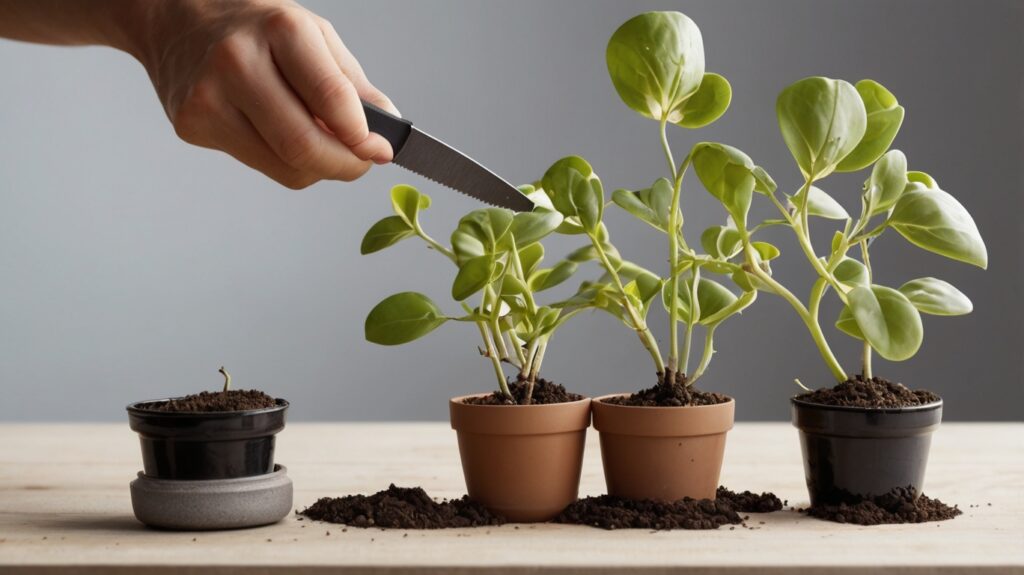
Common Mistakes to Avoid During Trimming
Proper trimming is essential for the health and appearance of a money tree plant, but common mistakes can hinder its growth and create issues. Below are some critical errors to avoid:
1. Using Dirty or Dull Tools
Using unclean or blunt pruning shears can spread infection or cause ragged cuts that take longer to heal. Ensure tools are sterilized with rubbing alcohol and sharpened before beginning.
2. Trimming at the Wrong Time
Trimming during the dormant phase of the plant or winter months can shock the money tree. It should be pruned in spring or early summer when it is actively growing to ensure better recovery.
3. Cutting Too Much at Once
Over-pruning, particularly removing more than one-third of the foliage, can strain the plant and hinder growth. Trim gradually and focus on shaping the plant while maintaining balance.
4. Removing Healthy Leaves or Branches
Target weak, damaged, or overgrown branches instead of unnecessarily removing healthy ones. Cutting vigorous and healthy areas can reduce the plant’s ability to photosynthesize and thrive.
5. Ignoring the Node Location
When trimming, cuts should be made just above a node to encourage regrowth. Cutting too close to or far from a node may create stubby growth or hinder the development of new branches.
6. Overlooking Airflow and Crowding
Failing to prioritize airflow by leaving overly dense sections can lead to pest infestations or fungal growth. Always ensure the cuts promote adequate spacing between branches.
7. Not Evaluating The Plant’s Shape
Attempting to trim without considering the plant’s natural growth pattern can lead to uneven or awkward shapes. Take time to assess the overall aesthetic before pruning.
Practical care and attention to detail during trimming can prevent these common errors and promote a healthier, well-shaped money tree plant.
FAQs About Money Tree Plant Care and Maintenance
How often should a Money Tree be watered?
A Money Tree generally thrives with moderate watering. It is best to water it once every 7 to 10 days, allowing the top inch of soil to dry out between watering sessions. Overwatering can lead to root rot, so it is important to ensure proper drainage. During winter months, watering should be reduced as the plant grows slower in cooler seasons.
What type of soil is best for a Money Tree?
The ideal soil for a Money Tree plant is well-draining and nutrient-rich. A mix of peat moss, sand, and perlite works well for fostering healthy growth. Using pots with drainage holes helps prevent water accumulation in the soil, ensuring the roots remain aerated and healthy.
Does a Money Tree require consistent sunlight?
Money Trees prefer indirect light and should be placed near a window where they can receive filtered sunlight. Direct sunlight for prolonged periods may scorch the leaves, while insufficient light can hinder growth. If natural light is unavailable, the use of fluorescent grow lights can provide a suitable alternative.
How does pruning affect the Money Tree’s health?
Pruning helps maintain the tree’s shape, promoting a tidy appearance and encouraging new growth. Dead or yellowing leaves and overgrown stems should be trimmed to prevent diseases and improve airflow around the plant. Regular trimming ensures the plant remains vibrant and healthy.
Can pests harm a Money Tree plant?
Like many houseplants, Money Trees can be vulnerable to pests such as spider mites and mealybugs. These pests can damage foliage by sucking sap from the plant. Regular cleaning of the leaves with a damp cloth and using insecticidal soap can help control infestations effectively.
What temperature range is ideal for a Money Tree?
Money Trees thrive in temperatures between 65°F and 75°F and can tolerate slightly warmer environments. Extreme cold should be avoided, as it can harm the plant. Keeping the plant away from drafts and sudden temperature drops helps it maintain its health.
How can one propagate a Money Tree?
Propagation can be achieved through stem cuttings placed in water or soil. The cutting should include a few healthy nodes and leaves. Once roots develop, the propagated plant can be transferred to a pot with appropriate soil. Regular care ensures successful propagation.
Does fertilization benefit the Money Tree plant?
Fertilization is essential during the growing season, typically spring and summer. Using a balanced, water-soluble fertilizer monthly promotes lush foliage and stronger growth. Avoid over-fertilizing, which may damage the roots and the plant over.
Click the link below to buy “FLOWER Retro Wooden Stand Plant Terrarium with 3 Bulb Glass Vases for Hydroponic Home & Office Décor”

“Click the link below to buy “6-inch modern ceramic planter with glaze, drainage hole, and saucer for indoor & outdoor plants.”
